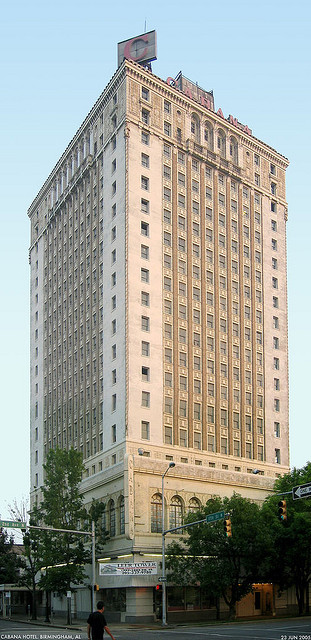Downtown may be getting it’s first non-local celebrity chef restaurant: according to the Birmingham Business Journal, chef Todd English plans to open a Todd English P.U.B. (Public Urban Bar) concept at the new Westin Hotel currently wrapping up construction. While Todd English runs numerous restaurants across the US, most are in Boston, New York, Las Vegas, and LA. None are in the South (save one at Disney World in Orlando), making the choice of Birmingham pretty interesting. Could it be that our own nationally recognized local food culture is now attracting not just good press, but out-of-town nationally recognized chefs? The menu in the one other P.U.B. (Las Vegas, at City Center) is decidedly gastropub, with lots of sliders and draft beers (pictured above; we assume prices would be slightly lower in this market). Bar games such as beer pong are advertised as well. The beer-ish theme seems well-suited to a city undergoing a full-fledged renaissance in beer making and appreciation.
Above is the current state of the Westin (2200 block of Richard Arrington, Jr. Blvd. North) where workers are racing to get the hotel open in January. The main lobby will enter under the canopy with the nameplate; the restaurant space is on the ground floor to the right in the photo, with outdoor seating facing the planned Entertainment District, of which Texas de Brazil is the first announced tenant. P.U.B.’s theme and celebrity chef concept seem promising as a place that could attract convention-goers and locals alike.
A dozen blocks north at First Avenue South between 14th and 16th Streets, Regions Field, the new home of the Birmingham Barons, is taking shape across from Railroad Park (above, looking south from the park–check out the live construction cam here). Now that the rough massing is taking shape, the scale and edge it gives to the corner are feeling pretty good. Given the April 10 opening date, we should be able to analyze the finish materials and streetscape soon enough.
We hope there’s lots of coordination forthcoming between UAB, area property owners, developers, and the City to plan a new Parkside district that’s a win-win for everyone. With Good People Brewing Company expanding across the street, and Southpace Properties working on a new restaurant project (no drive-throughs, please!) next door, the potential is there. Now, if we just had that new streetcar to take us effortlessly from an IPA at the ballgame to a Spring Street Saison at the P.U.B….
[thanks to cdtatro for the P.U.B. pic]















